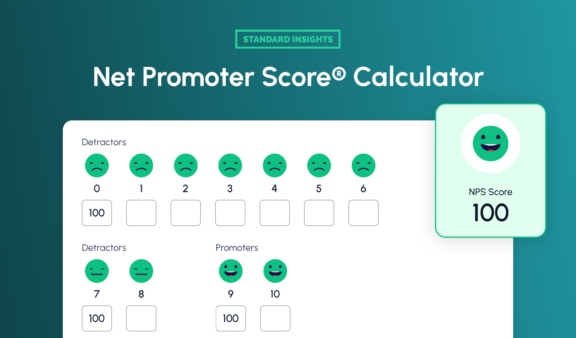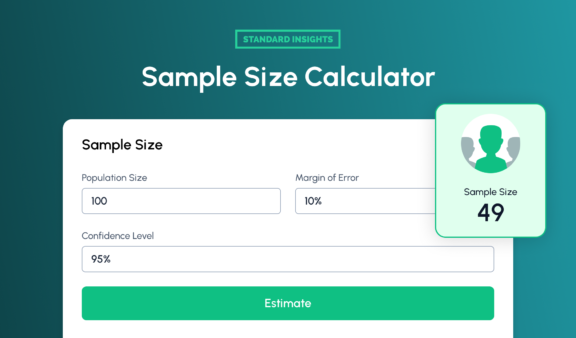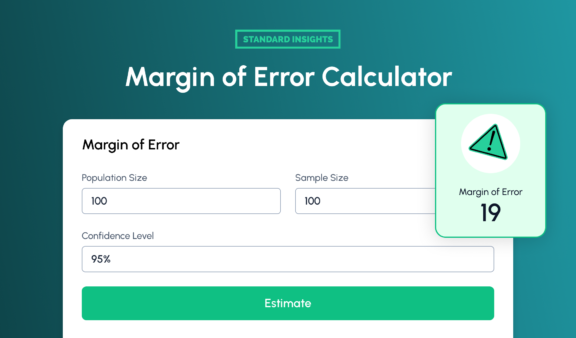
Calculate your Net Promoter Score instantly with our free NPS calculator. Measure customer loyalty, interpret results, and boost satisfaction.
Easily calculate the confidence interval for a population mean with our user-friendly Confidence Interval Calculator.

Input your sample mean, sample standard deviation, and sample size.

Select your desired confidence level (e.g., 95%) from the dropdown menu.

Click the "Calculate" button to get your results instantly.
A confidence interval is a statistical range, estimated from observed data, that is likely to cover an unknown population parameter. In simpler terms, it’s an educated guess about the possible range of an unknown average or proportion.
Here are the key components you need to calculate a confidence interval:
Sample Mean (x̄): This is the average of your sample data. For instance, if you’re looking at the ages of a group of people, you would add all the ages together and divide by the total number of people to get the sample mean.
Sample Standard Deviation (s): This is a measure of the amount of variation in your sample. It tells you how spread out the numbers in your data are. The higher the standard deviation, the greater the spread; and the smaller the standard deviation, the closer your numbers are to the mean.
Sample Size (n): This is the total number of observations in your sample. For example, if you’re looking at the ages of a group of people, the sample size would be the total number of people.
The confidence level, usually expressed as a percentage, is how sure you can be that your interval contains the true population parameter. For example, a 95% confidence level means that you can be 95% certain that the calculated interval contains the true population mean.
Confidence intervals are used in a variety of situations. Here are a few examples for clarity:
In Health Research: A researcher might use a confidence interval to show the possible outcomes of a health treatment. For example, a 95% confidence interval for the average weight loss of a new diet might be 15 to 25 pounds. This means the researcher is 95% confident that people following the diet will lose between 15 and 25 pounds on average.
In Business: A business analyst might use a confidence interval to estimate the proportion of customers satisfied with a new product. For instance, a 90% confidence interval of 70% to 80% would suggest the analyst is 90% confident that the true proportion of satisfied customers lies between 70% and 80%.
In Polling: In political polling, a pollster might use a confidence interval to estimate the proportion of voters supporting a candidate. For example, a 95% confidence interval of 52% to 58% would mean the pollster is 95% confident that the true proportion of voters supporting the candidate is between 52% and 58%.
Understanding the range of possible values for a population parameter, such as a mean or proportion, can be incredibly useful in making informed decisions in various fields, from business to healthcare and beyond
When you receive the output of the Confidence Interval Calculator, you’ll get a range of values and a confidence level. For example, you might get a 95% confidence interval of 48.04 to 51.96.
Here’s how to interpret it:
This means, if you were to take 100 different samples and compute a 95% confidence interval for each sample, then approximately 95 of the 100 confidence intervals will contain the true mean value (μ). 5 of them might miss the true value — this is part of the 5% uncertainty.
It’s important to note that the confidence level does not express the probability that the true parameter value lies within the confidence interval. Instead, it describes the long-term behavior of confidence intervals.
The confidence level is the estimated probability that the confidence interval will contain the true population parameter. A 95% confidence level, for example, suggests that you can be 95% certain that the calculated interval contains the true population mean.
If your sample size is small (below 30), you typically use a t-distribution instead of a normal distribution. This is because the t-distribution takes into account the increased uncertainty of smaller sample sizes.
If the data isn't normally distributed or the sample size is too small to rely on the Central Limit Theorem, you can use non-parametric methods to calculate a confidence interval. Alternatively, the data can be transformed to approximate a normal distribution, if appropriate.

Calculate your Net Promoter Score instantly with our free NPS calculator. Measure customer loyalty, interpret results, and boost satisfaction.

Quickly calculate the ideal sample size for your study based on confidence level, margin of error, and population size.

Easily determine the margin of error for your survey results using sample size, population, and confidence level.
Create your free account, and use our set of tools to conduct your research easily.